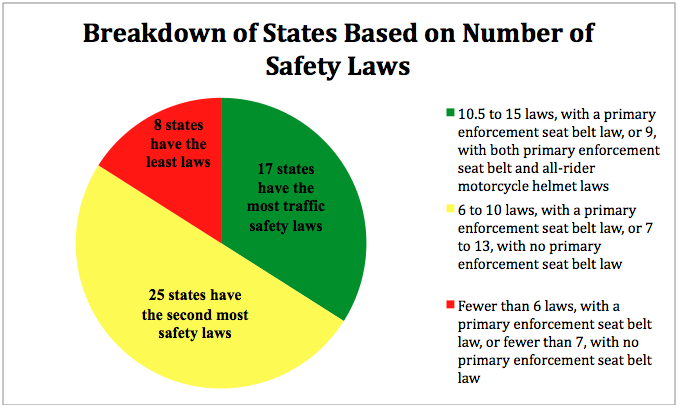
| Monday, January 23, 2012 | Archives | Advertise | Online Buyer's Guide | FLEETSolutions |
2012 Roadmap To State Highway Safety Laws Shows Fiscal Impact Of Highway Safety Gaps
 Advocates for Highway and Auto Safety released on January 11 the 2012 Roadmap to State Highway Safety Laws, the ninth annual report card grading all fifty states and the District of Columbia on their performance when it comes to adopting fifteen basic traffic safety laws. This year the report focuses on the state fiscal impact of highway safety gaps. Among the fifteen model laws evaluated in the 2012 report are seat belt, booster seat, and motorcycle helmet measures, in addition to restrictions and requirements for teen drivers, all-driver texting bans, and tougher impaired driving laws. The federal government estimates that motor vehicle crashes cost society $230 billion every year. In 2010, nearly 33,000 people died in crashes throughout the nation and over two million more were injured. This is equivalent to a "crash tax" of more than $750 for every person. "The National Transportation Safety Board has made safety recommendations on every one of the fifteen laws included in the report and some of those are also on the NTSB Most Wanted List this year," said Mark R. Rosekind, Board Member, National Transportation Safety Board. "Drunk driving costs the United States more than $132 billion annually," said Jan Withers, President of Mothers Against Drunk Driving (MADD). "Effective laws like ignition interlock for all convicted drunk drivers will save lives and save money for states. With the technology at hand there is no excuse for states to delay enacting this lifesaving law." In 2011, thirteen states enacted one or more of the recommended highway safety laws for a total of sixteen new laws. No state enacted an all-rider motorcycle helmet law although there were thirteen attempts to repeal existing laws. The new laws enacted in all state legislatures are: Primary Enforcement of Seat Belts: Rhode Island Booster Seats (children ages 4 through 7): California and Georgia Graduated Driver Licensing (GDL) for teen drivers: New Mexico (optimal cell phone restriction), North Carolina (supervised driving), North Dakota (nighttime and optimal cell phone restrictions), and Pennsylvania (passenger restriction) Impaired Driving: Connecticut (ignition interlock devices for all offenders) and Kansas (ignition interlock devices for all offenders) All-Driver Text Messaging Restriction: Indiana, Maine, Nevada, New York (upgraded to primary enforcement), North Dakota, and Pennsylvania
|
 |
NAFA Fleet Management Association 125 Village Blvd., Suite 200 Princeton, NJ 08540 Telephone: 609.720.0882 Fax: 609.452.8004 |







